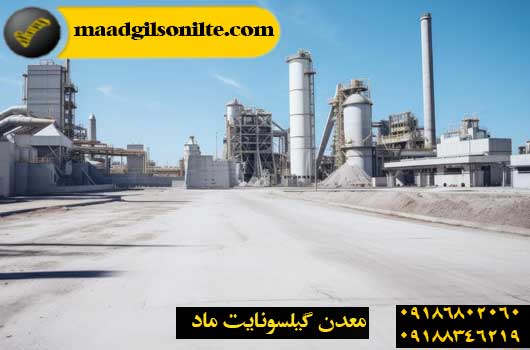
The method of producing complete white bitumen with the details of the production steps:
White bitumen, a versatile material known for its white color and various industrial applications, is produced through a specific production method that includes a series of precise steps and steps. This article provides a comprehensive overview of the white bitumen manufacturing process, details the raw materials required, equipment used, heating and mixing techniques, addition of stabilizers and pigments, quality control measures, and packaging and storage instructions. . By understanding the intricacies of white bitumen production, readers will gain valuable insight into this essential material and its production process.
White bitumen, also known as white asphalt or transparent bitumen, is a versatile material that is used in various construction and infrastructure projects. It offers durability, weather resistance and excellent adhesion properties, making it a popular choice for road surfaces, waterproofing and roofing applications.
White bitumen is a derivative of bitumen or gilsonite, (you can contact our experts about buying gilsonite), a viscous black substance obtained from petroleum distillation. It undergoes a purification process to remove impurities, resulting in a clear or light-colored product. Its applications range from creating high-quality road surfaces to making waterproof membranes and reflective roof coatings.
In the production method of white bitumen, it needs special raw materials and equipment to guarantee the quality and consistency of the final product.
The primary raw materials for the production of white bitumen include bitumen or natural bitumen, mineral fillers, stabilizers and pigments. Bitumen acts as the base material, while mineral fillers increase strength and stability. Stabilizers help improve durability and pigments provide color and UV protection.
Key equipment for white bitumen production includes heating unit, mixing tank, storage tanks, pumps and quality control instruments. The heating unit is crucial for melting the raw materials, while the mixing vessel ensures the proper composition. Storage tanks store the finished product and pumps facilitate transportation. Quality control tools control parameters such as temperature and viscosity to maintain product quality.
The production of white bitumen involves thermal processes and precise mixing to achieve the desired properties and consistency.
Raw materials such as petroleum bitumen or natural bitumen extracted in natural bitumen mines and fillers are heated in a controlled environment to melt and homogenize the mixture. Heating ensures proper flow and helps to effectively combine the various components.
When the raw materials reach the desired temperature, they are thoroughly mixed to create a uniform composition. The mixing process plays a vital role in the uniform distribution of additives and the formation of a stable white bitumen mixture.
Stabilizers and pigments are essential additives in the production method of white bitumen that contribute to its performance and aesthetic appeal.
Stabilizers increase durability and resistance to weather by improving the resistance of white bitumen to UV rays, oxidation and temperature fluctuations. They help to increase the life of the material and make it suitable for long term applications.
Pigments provide white bitumen with its characteristic color and contribute to its reflective properties. In addition to aesthetic appeal, pigments provide UV protection and heat reflection, increasing material performance and energy efficiency in various building applications.
When it comes to white bitumen manufacturing, quality control is the name of the game. It involves various checks and balances during the manufacturing process to ensure that the final product meets all the required specifications. From monitoring temperature and pressure to verifying ingredient amounts, every step is scrutinized to maintain consistency and quality.
Once the white bitumen is completely mixed and ready to use, it’s time to test it. Various test methods are used to check properties such as viscosity, adhesion and durability. Whether using specialized equipment or good old-fashioned hands-on inspections, these tests help ensure that the white bitumen will do the job.
White tar packing is all about keeping things airtight and secure. Whether the packaging is a drum, tar bag, or tank, the packaging must be strong enough to withstand transportation and storage while keeping the product safe from contamination. After all, no one wants a leaky package to ruin their day.
Once the white tar is all packed and ready to go, it’s time to find a cozy place to cool it down. Proper storage is the key to maintaining product quality and performance. Whether you’re storing it in a cool, dry place or making sure it’s protected from sunlight and extreme temperatures, following storage guidelines will ensure your white tar stays in top condition until it hits the road. Retention is very important.
As a result, the production of the white bitumen method is a precise and coordinated process that ensures the creation of a high quality product with diverse industrial applications. By following the steps mentioned and following quality control measures, manufacturers can produce white bitumen efficiently and effectively. This article provides a comprehensive guide to the manufacturing steps and highlights the importance of each step in the creation of this valuable material. With proper packaging and storage, white bitumen can be kept in optimal conditions and ready for use in various industries.
The main raw materials for the production of white bitumen include crude oil, water, and polymer chemicals.
The heating process is very important in the production of white bitumen because at high temperatures, the crude oil decomposes and the organic matter decomposes in it to produce white bitumen.
The addition of stabilizers and pigments in the production of white bitumen is important for two main reasons: First, stabilizers prevent the degradation and chemical change of bitumen in different weather conditions. Secondly, the pigments give the white bitumen a desirable color and uniformity.
Key quality control measures during white bitumen production include quality control of raw materials, temperature and pressure control in the heating process, physical and chemical tests on white bitumen samples, and field tests to ensure the quality and performance of the final product.

